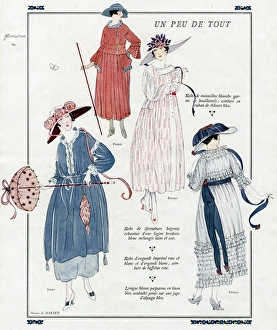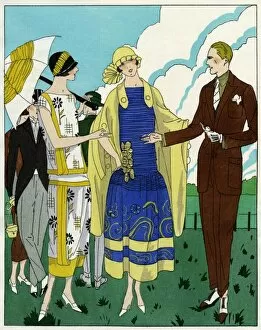Organdy Collection
In the 19th century, the fisherwomen of Bordeaux, France embraced the elegance and charm cotton for their special occasions
All Professionally Made to Order for Quick Shipping
In the 19th century, the fisherwomen of Bordeaux, France embraced the elegance and charm cotton for their special occasions. These women knew how to make a statement with their fashion choices, as depicted in paintings such as "Mrs. Nancy Lawson" and "Louisa Galland Cook Moore. " The delicate fabric was often used to create tall bonnets that added a touch of sophistication to their attire. The fisherwoman's ensemble consisted of a bodice with waist openings that revealed the shirt underneath, along with a fichu, apron, and petticoats. This combination showcased both practicality and style - an ideal blend for those working near the sea. The popularity extended beyond Bordeaux's shores. Advertisements featuring Poiret, Premet, and Jenny fashions highlighted its versatility in creating fashionable garments. Whether it was for formal events or casual outings during summer days, organdy proved to be a go-to choice. Granville also embraced this trend by showcasing stunning costumes adorned with organdy fabric. These outfits exemplified femininity while maintaining comfortability - an essential aspect when it came to fashion during that era. Jeanne Lanvin further solidified organdy's place in high-end fashion by designing exquisite dresses in white and green hues. The lady wearing one of these creations exuded gracefulness and sophistication effortlessly. Jean Patou and Doucet contributed to the love affair between women and organdy by presenting three stunning summer outfits made from this ethereal material. These designs perfectly captured the essence of warm weather while keeping up with contemporary trends. Organdy became synonymous with elegance throughout history due to its ability to elevate any outfit into something extraordinary. From humble fisherwomen in Bordeaux donning tall bonnets on special occasions to high society ladies flaunting Jeanne Lanvin's masterpieces – this fabric has stood the test of time as a symbol of refined taste and timeless beauty.













